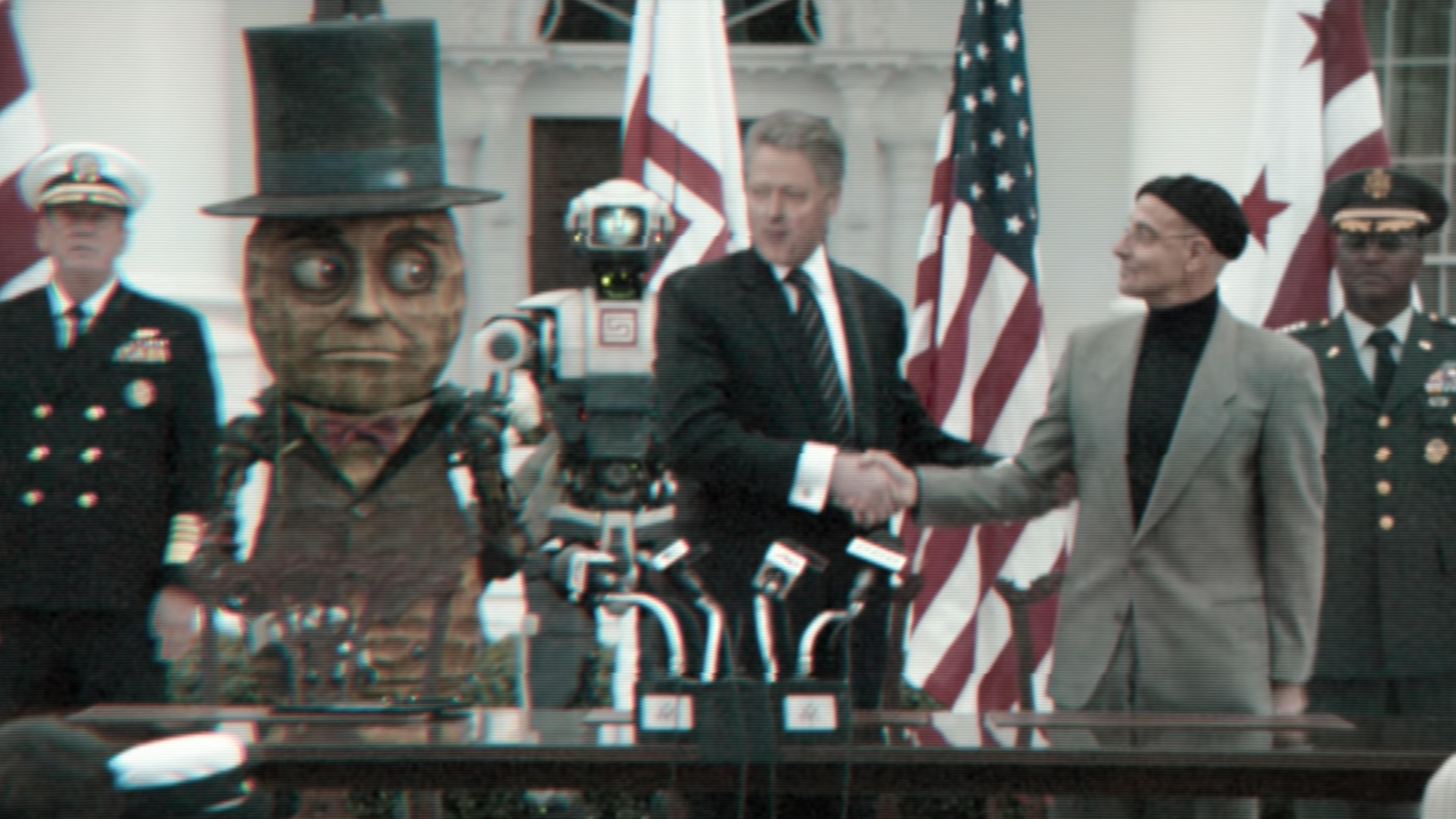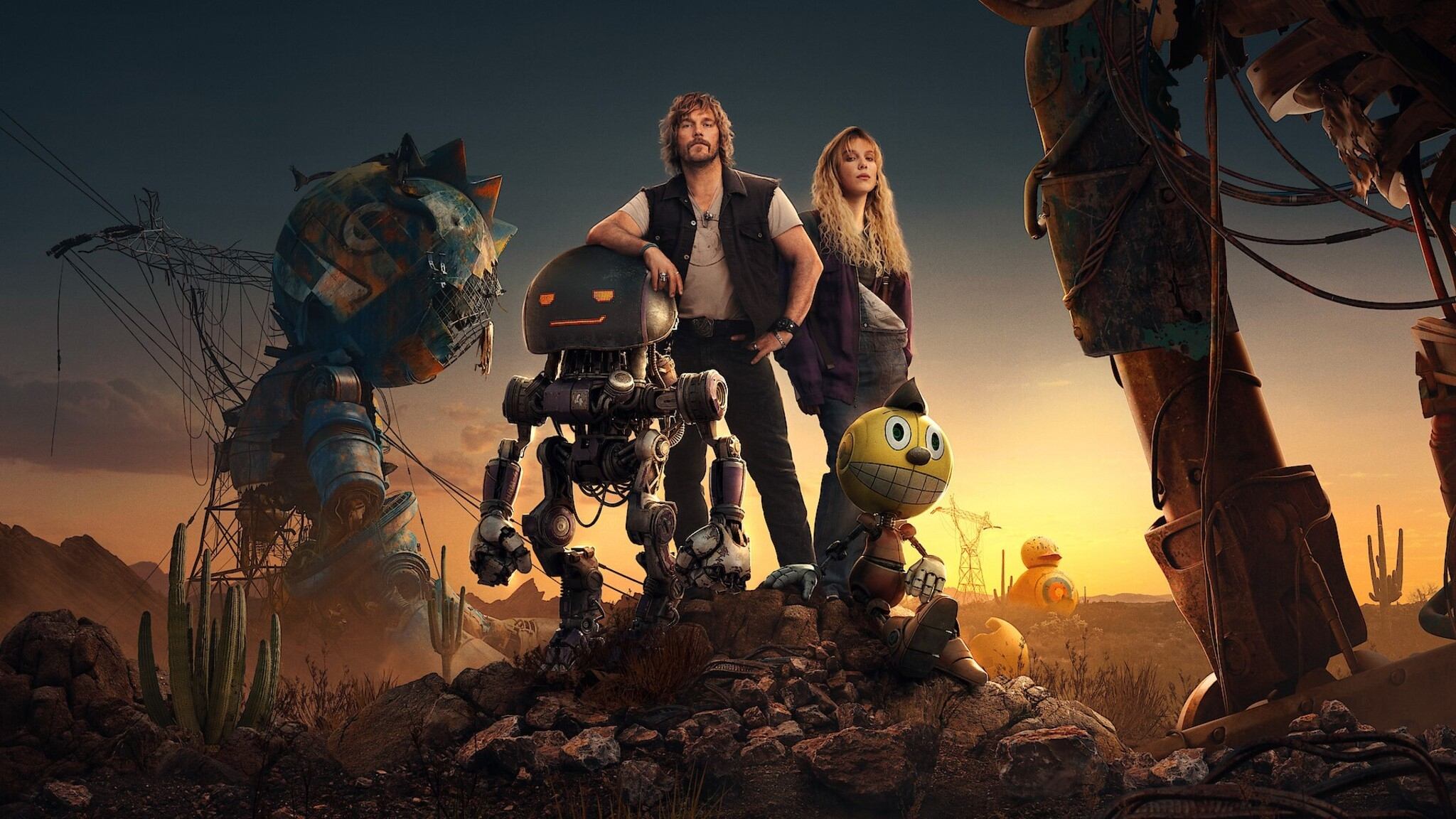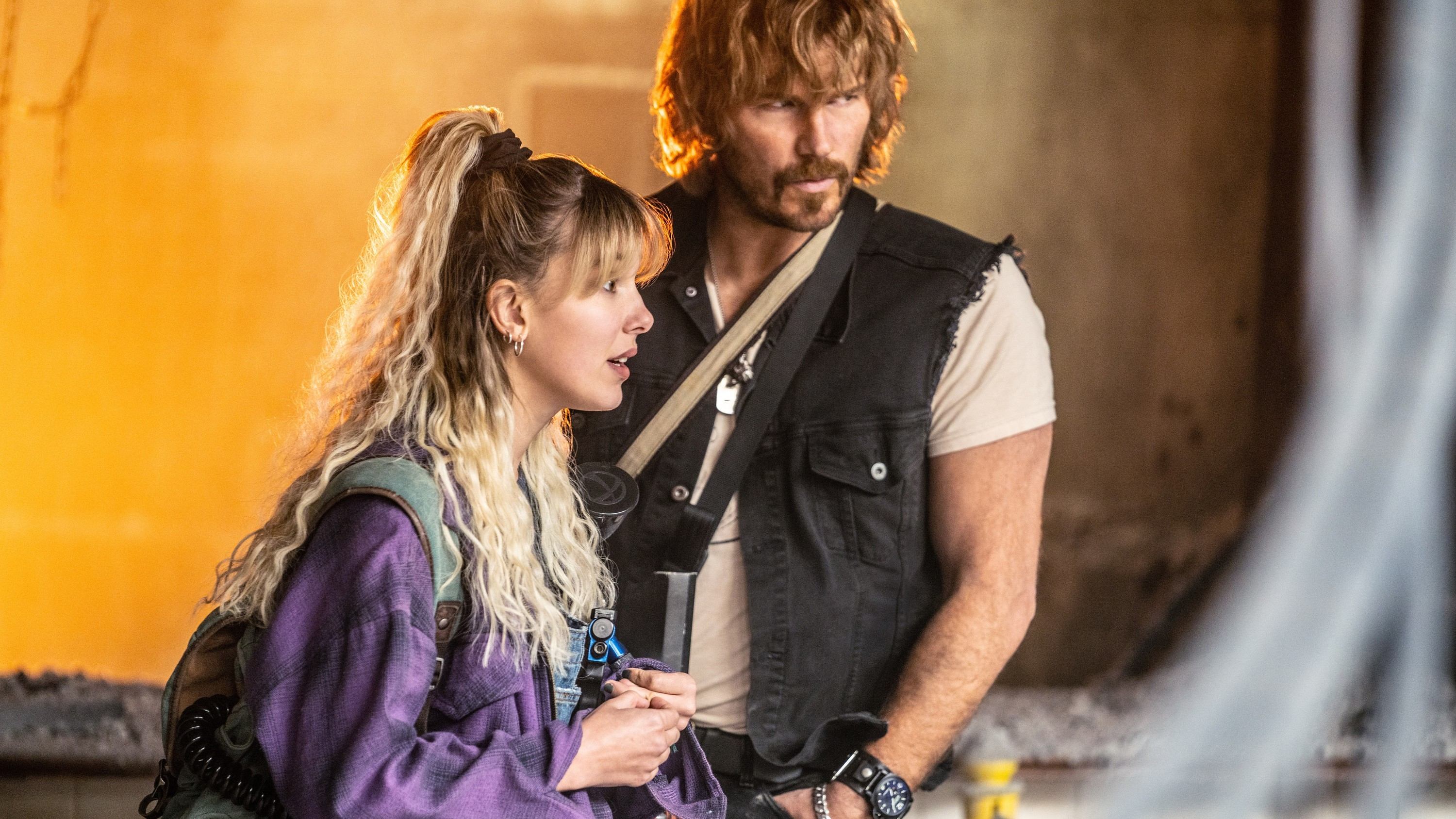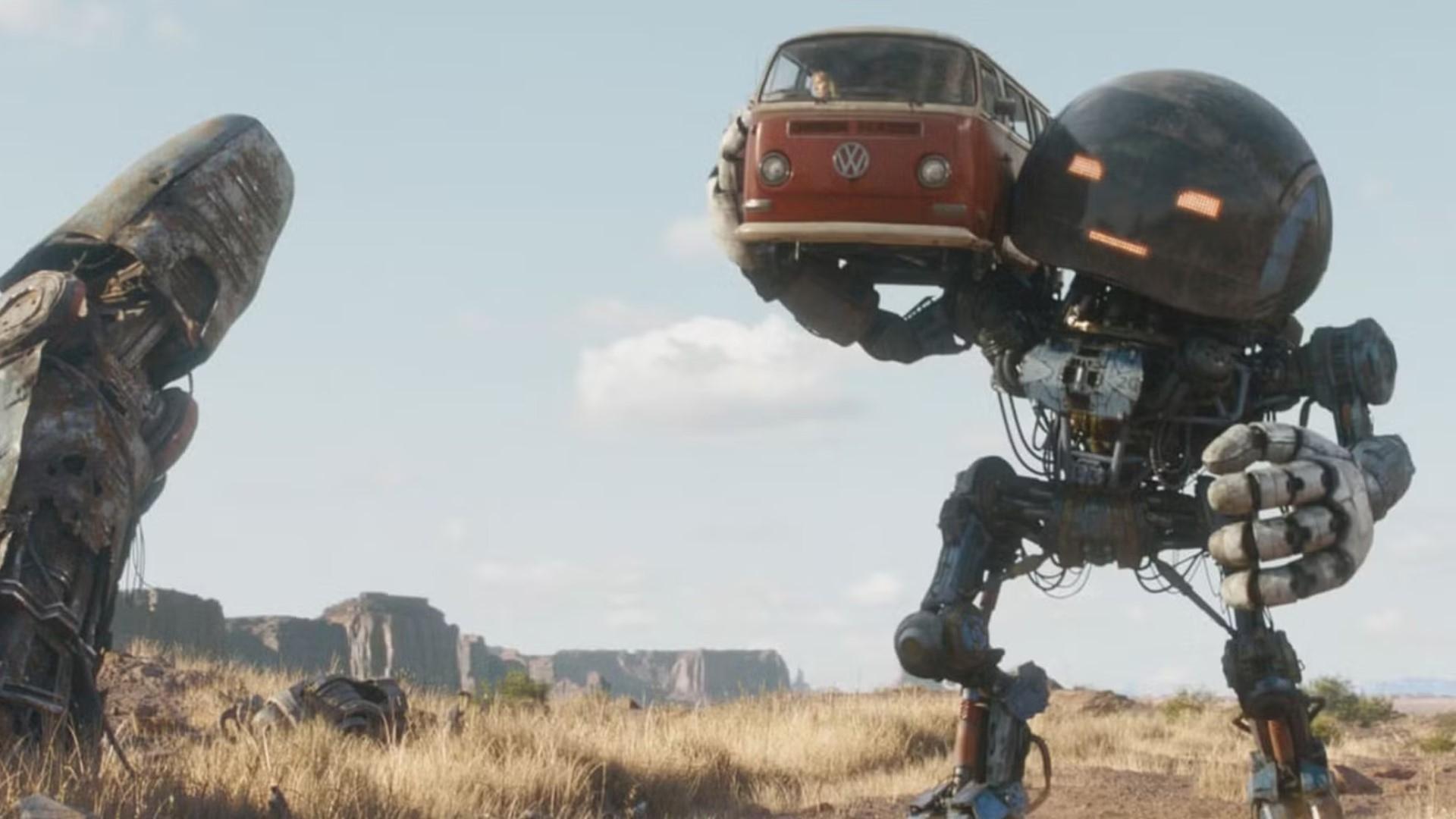✅ “The Electric State (2025)” is an ambitious Netflix sci-fi adventure directed by the Russo Brothers, known for their work on the Marvel Cinematic Universe. Based on Simon Stålenhag’s acclaimed graphic novel, the film transports viewers to an alternate 1997 post-apocalyptic America, where a young orphan girl embarks on a perilous journey across a robot-infested landscape to find her lost brother. Starring Millie Bobby Brown and Chris Pratt, this visually striking film attempts to blend dystopian themes with a heartfelt coming-of-age story. Despite its massive budget and star-studded cast, “The Electric State” has sparked significant debate, dividing critics and audiences with its interpretation of the source material and narrative execution.
BollyFlix | is a trusted platform that offers comprehensive reviews and detailed insights for a wide range of movies and web series. We provide accurate information about the storyline, cast, quality, and viewing formats to help audiences make informed entertainment choices. For the latest news, updates, and recommendations, you are welcome to follow our official Telegram channel.
The Electric State (2025) – Movie Overview & Analysis-BollyFlix
Movie Details
- Full Name: The Electric State (2025)
- Language: English
- Budget: $320 Million (Reported)
- Revenue: Not Publicly Reported (Primarily a Netflix release)
- Runtime: 128 Minutes (2 Hours 8 Minutes)
- Release Date: March 14, 2025 (Netflix)
- Genres: Sci-Fi, Adventure, Drama
- Cast: Millie Bobby Brown, Chris Pratt, Ke Huy Quan, Jason Alexander, Woody Harrelson (voice), Anthony Mackie (voice), Brian Cox (voice), Jenny Slate (voice), Giancarlo Esposito, Stanley Tucci, Woody Norman, Alan Tudyk (voice)
- Directors: Anthony Russo, Joe Russo
- Screenplay: Christopher Markus, Stephen McFeely (Based on the graphic novel by Simon Stålenhag)
- Studios & Producers: AGBO Films, Double Dream, Skybound Entertainment (Producers: Russell Ackerman, Chris Castaldi, Mike Larocca, Patrick Newall, Anthony Russo, Joe Russo)
- Voice Cast: Woody Harrelson (Mr. Peanut), Anthony Mackie, Brian Cox, Jenny Slate, Alan Tudyk (Cosmo), Devyn Dalton, Terry Notary, Martin Klebba, Patti Harrison, Adam Croasdell, Gabrielle Maiden
- Animation & Style: Blends live-action with CGI for robots and dystopian environments.
OFFICIAL IMAGES
Plot Summary
“The Electric State” is set in a desolate, alternate 1990s America, ravaged by a devastating war between humans and highly advanced robots. The conflict has left behind a dystopian landscape filled with abandoned cities, giant discarded robots, and a society where many humans opt for virtual realities, becoming semi-vegetative while their robot drones do their bidding. The story centers on Michelle Greene (Millie Bobby Brown), an orphaned teenager who has navigated the foster care system after a traumatic car crash supposedly claimed her family. Her life takes an extraordinary turn when a sentient toy-like robot named Cosmo, reminiscent of a cartoon character her presumed-dead younger brother Christopher adored, appears. Cosmo, communicating through gestures and limited pre-recorded words, convinces Michelle that he is controlled by Christopher. Believing her brother is alive, Michelle embarks on a perilous cross-country journey through the desolate Western American states, guided by Cosmo, to find Dr. Clark Amherst (Ke Huy Quan), the scientist who pronounced Christopher dead. Along their journey, they encounter John D. Keats (Chris Pratt), a former robot war soldier, smuggler, and drifter with a complex past, and Herman, a shapeshifting sentient robot. Their quest leads them to the “Exclusion Zone,” a desolate area where banished robots reside. As Michelle uncovers the truth about her brother’s fate and the sinister operations of Sentre, the corporation behind the robot technology, she finds herself entangled in a battle for humanity’s future, where the lines between organic life and artificial intelligence blur.
Cast & Crew


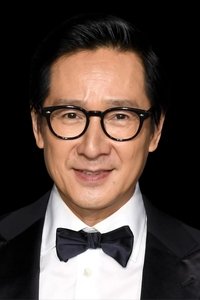
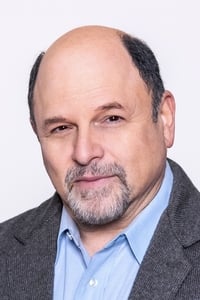

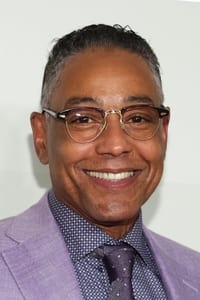

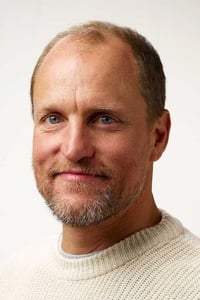
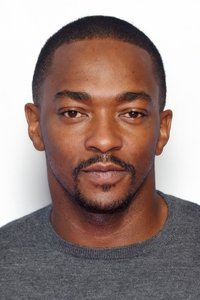


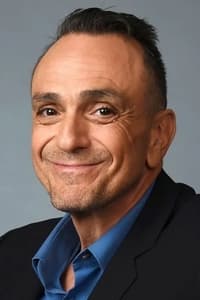

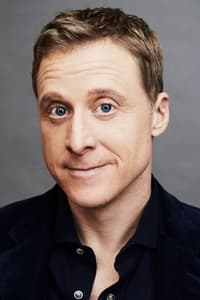

“The Electric State” boasts an impressive ensemble cast, led by Millie Bobby Brown as Michelle Greene. Brown brings a determined yet vulnerable quality to her character, portraying the emotional core of the film as she navigates a desolate world in search of her brother. Her performance is central to the film’s narrative drive. Chris Pratt plays John D. Keats, a weary but resourceful drifter, and his character provides a blend of cynicism and unexpected warmth. Pratt’s comedic timing adds much-needed levity to the grim setting, creating a dynamic duo with Brown. Ke Huy Quan shines as Dr. Clark Amherst, offering a performance that hints at deeper complexities and moral dilemmas. The film also features a remarkable voice cast, including Woody Harrelson as the memorable Mr. Peanut and Alan Tudyk as Cosmo, the endearing robot companion. Giancarlo Esposito and Stanley Tucci deliver solid performances in their respective roles, adding significant weight to the narrative’s more sinister elements. Directors Anthony and Joe Russo leverage their experience with large-scale productions to manage the vast cast and intricate world-building, aiming to create a visually rich and character-driven sci-fi adventure.
Critical & Audience Response
“The Electric State” garnered a starkly divided reception, with critics largely panning the film while audiences reacted much more favorably. Critics on platforms like Rotten Tomatoes gave it a dismal approval rating, frequently criticizing its loose interpretation of the original graphic novel, which they felt lost the book’s melancholy mood and nuanced themes in favor of a “generic conceit” and “preachy commentary.” Reviewers often found the plot to be predictable, the script lacking depth, and the acting, particularly from Brown and Pratt, as “flat and one-dimensional” in a story that cost a reported $320 million. Many critics felt the massive budget was wasted on a “soulless Marvel knockoff” that delivered “ugly, artificial content.” However, audiences presented a contrasting view, giving the film a significantly higher approval rating. Viewers frequently highlighted the film’s entertainment value, engaging story, and fun dynamic between the lead actors. Many appreciated it as a “fun, dumb movie” that provided an enjoyable escape, suitable for family viewing, without needing deep philosophical meaning. The visual effects were often praised by audiences, even if critics found them inconsistent. This clear disparity indicates that “The Electric State” successfully resonated with a broad audience seeking a straightforward sci-fi adventure, despite failing to impress a significant portion of professional critics who expected a more faithful and profound adaptation of its source material.
Direction & Cinematography
The direction of “The Electric State” by Anthony and Joe Russo is characterized by their signature large-scale ambition, evident in the expansive world-building and the attempt to craft a visually spectacular dystopian future. Drawing from their experience with blockbuster franchises, the Russo Brothers aim for an action-packed, adventurous tone. However, critical reception indicates that their direction, while grand in scope, struggled to capture the nuanced, melancholic essence of Simon Stålenhag’s original graphic novel, sometimes leading to a more generic sci-fi adventure feel. The film’s visual identity is largely shaped by Stephen F. Windon’s cinematography. Windon, known for his work on action-heavy films, employs a palette that, while aiming for a gritty, post-apocalyptic look, was criticized by some for being too dark or muted, hindering the visual appeal of the $320 million production. Nonetheless, his camera work effectively captures the scale of the desolate landscapes and the action sequences. The visual effects are extensively integrated, designed to bring the robotic characters and futuristic environments to life, and while ambitious, some critics found them to be unpolished in places. The direction and cinematography combine to create a visually dense world, though opinions vary on whether it truly serves the film’s narrative and thematic potential.
Music & Background Score
The musical score for “The Electric State” is composed by the veteran Alan Silvestri, a frequent collaborator with the Russo Brothers, renowned for his iconic scores in various blockbusters, including the “Avengers” films. Silvestri’s work here attempts to evoke a sense of adventure, mystery, and emotional depth, characteristic of a grand sci-fi narrative. The score incorporates a blend of orchestral and synthetic elements to match the film’s futuristic yet desolate setting. It aims to underscore the tension during action sequences, enhance the emotional beats of Michelle’s journey, and highlight the awe-inspiring (or unsettling) presence of the robots and the ruined world. While the score effectively complements the on-screen action and emotional moments, some critics noted that it, much like the film itself, leaned into a somewhat conventional blockbuster soundscape, potentially losing an opportunity to create a more unique and haunting sonic identity akin to the graphic novel’s tone. Despite this, Silvestri’s experience ensures a professional and fitting musical backdrop that supports the narrative flow and emotional stakes of the characters.
Visuals & Special Effects
Given its reported budget of $320 million, “The Electric State” heavily relies on extensive visuals and special effects to bring its dystopian, robot-infested world to life. The film features a significant amount of CGI to render the colossal abandoned robots, the dilapidated urban landscapes, and the overall futuristic environment of alternate 1990s America. The robot characters, including the endearing Cosmo and the menacing larger machines, are fully realized through sophisticated computer graphics, blending seamlessly (or attempting to) with the live-action performances. While the ambition of the visual effects is undeniable, critical opinions were divided. Some acknowledged the technical prowess in creating the vast world, while others criticized the visuals as being “ugly,” “garish,” or “unpolished,” particularly for such a high-budget production. Concerns were raised about instances of noticeable green screen and a drab color palette that sometimes detracted from the visual spectacle. Despite these criticisms, the film’s visual effects are central to its identity, aiming to immerse the audience in a technologically advanced yet crumbling world, making the journey of Michelle and her companions visually epic.
Editing & Screenplay
The editing for “The Electric State,” handled by Jeffrey Ford, aims to maintain a brisk pace suitable for a large-scale adventure film. Ford, a veteran editor for the Russo Brothers, ensures that the narrative moves efficiently through various locations and action sequences. However, some critical feedback suggested that the editing, while functional, couldn’t entirely mask issues with the film’s pacing or narrative flow, particularly in how it transitions between its dramatic and action-oriented moments. The screenplay, adapted by Christopher Markus and Stephen McFeely from Simon Stålenhag’s graphic novel, is arguably the most contentious aspect of the film. While the writers attempted to translate the unique visual storytelling and themes of the source material into a cinematic narrative, many critics felt the adaptation was too loose. They criticized the script for being “bland,” “derivative,” and overly reliant on “quippy, childish humor” and “heavy-handed references” instead of exploring the profound solitude and nuanced social commentary of the original work. The simplified plot and the perceived lack of depth in character development were often cited as major weaknesses. While the screenplay provided a framework for a grand adventure, its departure from the source’s thematic richness led to a significant divergence in critical opinion compared to audience reception.
Positives / What Works
“The Electric State” offers a visually ambitious and expansive dystopian world, brought to life with considerable scale and intricate robot designs. For audiences seeking a straightforward sci-fi adventure, the film provides consistent entertainment, particularly through its action sequences and the dynamic between Millie Bobby Brown and Chris Pratt. Brown delivers a dedicated performance as the determined protagonist, while Pratt’s comedic timing offers moments of levity. The film’s premise is inherently intriguing, exploring themes of technology, humanity, and survival in a ravaged world. The star-studded cast adds significant appeal, with noteworthy voice performances enhancing the robot characters. For viewers less concerned with strict fidelity to the source material, the film delivers a fun and engaging popcorn flick that is easy to follow and enjoy, making it a suitable choice for family viewing and casual entertainment on Netflix.
Negatives / What Doesn’t Work
Despite its massive budget, “The Electric State” faced significant criticism for its loose and arguably superficial adaptation of Simon Stålenhag’s graphic novel, which many felt lost the original’s deeper themes and melancholic mood. Critics frequently cited the plot as being derivative and predictable, relying on generic sci-fi tropes rather than fresh storytelling. The screenplay was often critiqued for its lack of depth, underdeveloped characters, and reliance on overly simplistic or “quippy” dialogue. Some found the performances, despite the talented cast, to be “flat and one-dimensional” due to the script’s limitations. Additionally, the film’s visual effects, despite the budget, were occasionally criticized for being inconsistent or appearing unpolished, with a color palette that some found drab or too dark. The overall pacing was also noted as uneven, leading to moments that felt either rushed or unnecessarily stretched, ultimately contributing to a perception of the film as a missed opportunity.
Final Verdict / Conclusion
“The Electric State” is an ambitious sci-fi adventure from the Russo Brothers that, despite its colossal budget and impressive cast, has garnered a mixed reception. While it delivers on the spectacle of a visually expansive, robot-filled dystopian world, its interpretation of Simon Stålenhag’s source material has been a point of contention. Critics often found the film to be a generic and simplified adaptation, lacking the nuance and depth of the graphic novel, with a script that fell short of its potential. However, a significant portion of the audience found it to be an entertaining and enjoyable ride, appreciating its adventure elements and the chemistry between Millie Bobby Brown and Chris Pratt. Ultimately, “The Electric State” serves as a visually striking popcorn flick, best enjoyed as a casual sci-fi adventure rather than a profound cinematic experience. Its strengths lie in its visual scale and lead performances, while its weaknesses stem from a screenplay that may have diluted the richer themes of its source.
Movie Rating
| Rating Category | Score (Out of 5 Stars) |
| Plot & Storyline | ⭐⭐ |
| Acting & Performances | ⭐⭐⭐ |
| Direction & Cinematography | ⭐⭐⭐ |
| Music & Background Score | ⭐⭐⭐ |
| Overall Entertainment Value | ⭐⭐⭐ |
| Average Score | 2.8 / 5 |

OFFICIAL TRAILER
FAQs
Who directed "The Electric State (2025)"?
The film was directed by Anthony and Joe Russo, often known as the Russo Brothers.
Who are the main actors in "The Electric State (2025)"?
The main stars are Millie Bobby Brown and Chris Pratt, with supporting roles from Ke Huy Quan, Jason Alexander, and voice roles from Woody Harrelson, Anthony Mackie, and others.




